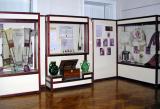2024. November 22. Friday
Rippl-Rónai Museum - Kaposvár
|
|
Address: 7400, Kaposvár Fő u. 10.
Phone number: (20) 287-9323
E-mail: titkarsag@smmi.hu
Opening hours: 01.04-31.10.: Tue-Sun 10-16
01.11-31.03.: Tue-Sun 10-15 |
recommended age: 8 - 14 year
Museum tickets, service costs:
|
Individual ticket for adults
|
800 HUF
|
|
|
Group ticket for adults
(over 10 people)
|
700 HUF
|
/ capita
|
|
Individual ticket for students
|
400 HUF
|
|
|
Group ticket for students
(over 10 people)
|
350 HUF
|
/ capita
|
|
Individual ticket for pensioners
|
400 HUF
|
|
|
Group ticket for pensioners
(over 10 people)
|
350 HUF
|
/ capita
|
|
Ticket for families
|
1700 HUF
|
/ family
|
|
Group program ticket for children
|
700 HUF
|
|
|
Season ticket
|
2300 HUF
|
|
|
Individual season ticket
|
1200 HUF
|
/ capita / 4 occasions
|
|
Group professional guide
|
2800 HUF
|
/ group / exhibition
|
Museum pedagogy contact person
Equipment in the institute
Professionals:
Rooms:
Leisure equipment:
Traffic:
Location: ethnographic exhibition
